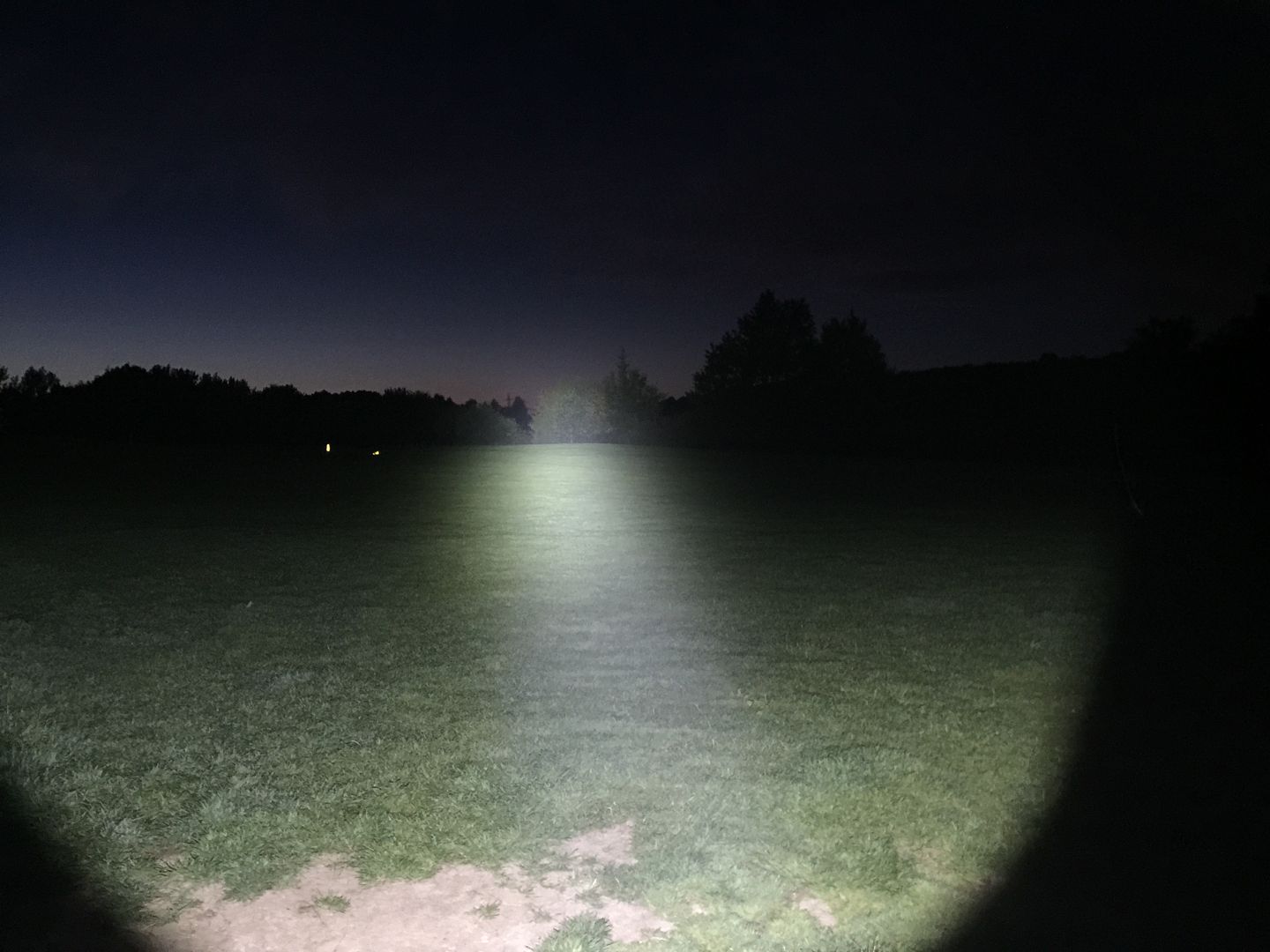The first thing to ask if the context is wildlife spotting is actually the minimum range it must have, and, will you be using your eyes, or, a scope/binoculars, etc, in conjunction with it?
Scenarios where you need to see a "distant mountain side" can be 100's of meters to miles of course...and to make out a bird in broad daylight at those ranges is typically an ambitious project to start with, let alone at night. A wild cat (Wildcat, as in lynx-type critter, or, house cat, that went feral?) would be variously hard to spot at those ranges in daylight as well, unless moving across open terrain typically.
Eye shine is easy on a nocturnal hunting cat of course, but not for a bird...especially a sleeping one.

To resolve a cat sized brown target at 200 meters for example will require an illumination goal of ~ 5-50 lux on the critter. A magnified optic with good light gathering, would be on the lower end of that range, and bare eyes at the other end.
To PUT 5 lux on something 200 meters away would require a light rated at ~ 200,000 cd.
To PUT 50 lux on something 200 meters away would require a light rated at ~ 2,000,000 cd. (cd = Two million)
Depending upon your degree of night adaptation during the search process, you need more or less, but the above assumes at least partial adaptation, typical in that scenario.
The more night adapted you are, the less cd you'll need to be able to resolve details. Also, as you become night adapted, your vision goes black and white, and you lose color vision.
If you are seeing in black and white, for maximum effectiveness, the tint of the light, the color rendition of the source, becomes progressively less relevant...and being able to make out the outline of your target, the texture of fur vs grass, etc, becomes progressively more important.
The longer the distance, the smaller percentage of your field of view it becomes. That means at very long ranges, to be ABLE to resolve fine details, you need your fovea, the ~ 2º cone of central vision, to bear on the target.
That part has mostly COLOR receptors, and horrifically poor low light ability...but the sharpest and best resolution part of your vision...if it can get enough light on targets to see them.
That all means that, for a long range night search, you typically need much much more light to resolve those distant targets.
When looking at SPECIFICATIONS for flashlights, they use the ANSI standard, which rates their range to 0.25 lux. For long ranges, 0.25 lux, ironically, is useless. 0.25 lux is ok to find the bathroom is strange hotel room, or your boots in your tent, etc, no problem...but is useless out in the field at 100 meter ranges.
That means you
cannot shop by simply saying "I need to see 500 meters, so, I'll buy this light, because it says it throws 500 meters according to the advertisement/specs, so its going to be great!".
IE: 500 meters to 0.25 lux means that at 500 meters, you only have a cd of 62.5 k....giving you ~ 0.25 lux, at 500 m.
0.25 lux at 500 m is not going to tell you anything at all except that perhaps the light hit something...but telling a shoreline from more lake is about all you'd know,
if seeing in 100% B&W, and, not if the shoreline had the dock you were looking for, or what kind of trees they were, and definitely not if there's a cat there too, etc. If you still COULD see any color, you'd see zero, total darkness out there at that range. Even at ONE lux, some people would have trouble even telling if there was water or shore out there at that range....let alone a dock...and forget about cats...UNLESS its
only eye shine you need.
A good example is when one guy shines a light putting 0.25 lux at that long range, at another guy who is holding a book. It is not unusual for the guy with the light to not even be able to
see the guy holding the book, but the guy WITH the book can actually READ the book by the light. This is because you can read by very low levels if you are night adapted, less than a lux, a tenth or 20th of a lux can even work...but, at several hundred meters, you can't see anything at all out there with that low a lux level.
Its a fun experiment to try...as the guy reading is always incredulous that you can't see him at all...yet he can read by your light

So, the more lux on target, the better, especially for small distant targets. If you NEED color to resolve the critters, you also then need a LOT more lux to be ABLE to at long ranges.
Sooooo, how far away do you want to be able to see what? (in meters)



